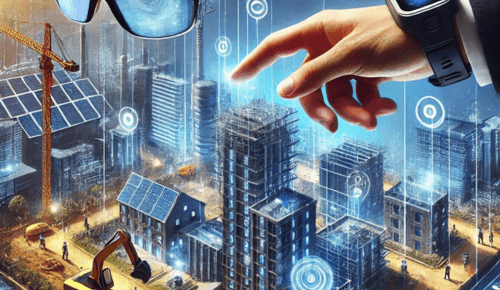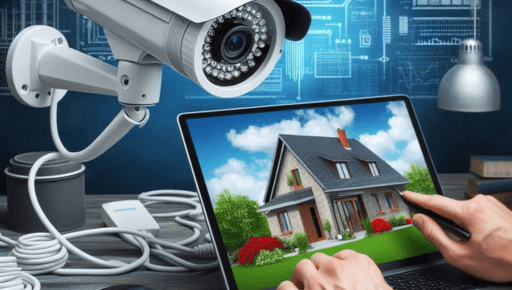In our increasingly digital world, the demand for faster, more reliable, and widespread connectivity has never been greater. Enter 5G technology, the fifth generation of wireless technology, poised to revolutionize how we connect, communicate, and consume information. In this article, we will explore the profound impact of 5G on connectivity and its potential to reshape industries and lifestyles.
The Journey from 1G to 5G
To appreciate the significance of 5G, it’s essential to trace the evolution of wireless technology. The journey began with 1G, which introduced us to the world of mobile telephony, albeit with limited capabilities. The subsequent generations, 2G, 3G, and 4G, brought us text messaging, mobile data, and high-speed internet on our smartphones.
With the advent of 4G, we witnessed a significant shift in how we use mobile devices. Video streaming, online gaming, and seamless web browsing became the norm. However, 4G, while impressive, has its limitations. It can become congested in densely populated areas, leading to slower speeds and connectivity issues.
The Need for 5G
This is where 5G technology steps in. It promises to deliver a quantum leap in connectivity, offering speeds that are up to 100 times faster than 4G. This means that downloading a high-definition movie, which might take minutes on a 4G network, could be accomplished in seconds with 5G. The reduced latency, or the delay between sending and receiving data, is another key feature of 5G, making real-time applications like augmented reality (AR) and virtual reality (VR) seamless and responsive.
Ubiquitous Connectivity
One of the most significant impacts of 5G is its potential to bring ubiquitous connectivity. This means that not only will our smartphones and laptops have faster internet access, but 5G will also connect a vast array of devices, from cars and appliances to medical equipment and industrial machinery. The Internet of Things (IoT) will thrive on 5G, enabling smart cities, autonomous vehicles, and efficient supply chain management, among other innovations.
Revolutionizing Industries
5G is not merely an incremental improvement in connectivity; it has the potential to disrupt and revolutionize various industries. Let’s take a look at some of these sectors:
- Healthcare: Telemedicine will see a massive boost with 5G, as it allows for high-quality video consultations and remote monitoring of patients. Surgeons could perform complex procedures with the assistance of haptic feedback, even if they are miles away from the patient.
- Education: 5G will enable immersive learning experiences, with students participating in virtual field trips and collaborative projects that were previously unimaginable. The low latency ensures that real-time interactions are smooth and natural.
- Transportation: Autonomous vehicles rely heavily on fast and reliable connectivity to make split-second decisions. 5G will be instrumental in the development and widespread adoption of self-driving cars, leading to safer and more efficient transportation.
- Entertainment: Streaming services will benefit immensely from 5G, with the ability to deliver 4K and even 8K content without buffering. Additionally, AR and VR applications will provide entirely new forms of entertainment and gaming.
- Manufacturing: The industrial sector will experience a revolution with the implementation of 5G. Smart factories will optimize production processes, track inventory in real-time, and provide predictive maintenance for machinery.
Challenges and Considerations
While 5G technology holds great promise, it also presents challenges and considerations that need to be addressed:
- Infrastructure: Implementing 5G requires a substantial infrastructure upgrade, including the installation of thousands of small cells to provide the necessary coverage. This comes at a significant cost and poses logistical challenges, particularly in densely populated urban areas.
- Spectrum Allocation: The allocation of suitable radio frequencies for 5G is a complex issue that involves government agencies, regulatory bodies, and telecommunications companies. Balancing the allocation of spectrum to accommodate various use cases and providers is a delicate task.
- Security: As more devices and industries become interconnected, the security of 5G networks becomes paramount. Ensuring the protection of sensitive data and preventing cyberattacks will require significant investments and robust cybersecurity measures.
- Privacy: With the increased connectivity and data sharing that 5G enables, privacy concerns become more pronounced. Striking the right balance between data utility and individual privacy is a delicate challenge.
Conclusion
5G technology is more than just an incremental improvement; it represents a transformative leap in connectivity. Its impact spans a wide range of industries and has the potential to revolutionize how we live and work. The road to widespread 5G adoption is not without challenges, but the promise of faster speeds, lower latency, and ubiquitous connectivity makes the journey worthwhile.
As 5G networks continue to roll out and devices become more compatible, we can expect a wave of innovation and new possibilities. From enhancing healthcare and education to powering autonomous vehicles and smart cities, 5G is poised to shape the future of connectivity in ways we are only beginning to comprehend. As it continues to gain momentum, 5G will undoubtedly redefine the boundaries of what is possible in our increasingly connected world.



